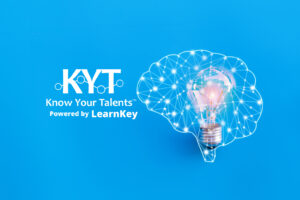
There’s no arguing that in today’s work world technology and digital literacy are ever-increasing requirements. With the pandemic and the explosive growth of remote and hybrid workplaces, the need to implement new technologies and to be digitally savvy accelerated exponentially. Technology is no longer a “nice to have” it’s a “must have” skill.
No big news flash, right?
This could be distressing news if you are just not a techie or if you are from a generation that didn’t grow up with a handheld device on your person at all times—believe me, I’m one of them. Or perhaps your Natural Behavior doesn’t lend itself to the love of details and technology!

According to the recent Work Life article “Why digital literacy is now a workplace non-negotiable,” there is some surprisingly good news.
Yes, workers across all industries must be more technologically advanced and nimble. Yes, digital skills will be a necessity, not a bonus. And yes, it’s going to get worse, or better depending upon who’s talking.
But here are 4 points that I found to be especially encouraging for those of us who’d rather be on a yoga mat or a running trail than in front of a computer:
- You don’t have to be a digital master, just “digitally confident”
“Be eager to try new technologies; embrace how the right tools can streamline routine tasks and improve workplace collaboration, while also having the flexibility and adaptability to learn new processes.”
- Take advantage of employer “Upskilling”
“In the face of worker shortages, employers are showing greater willingness than before to train and upskill candidates rather than seek the finished product.” This upskilling could take the form of on-the-job training or online learning and development courses such as the ones offered by KYT parent company LearnKey.

- Don’t forget good old-fashioned trial-and-error
A trial-and-error process, along with “informal learning and knowledge sharing among colleagues” is one of the most proven ways of acquiring new skills.
- Practice at home!
What people do outside the workplace can also help them. Using technology at home offers opportunities for experimentation and learning. For example, catching up with a friend via Zoom or Facetime, rather than text message, may help familiarize an employee with the apps they’ll use at work. Using social media can help them acclimate to the social platforms they may encounter in the workplace.
Regardless of how high-tech you may or may not be, there are ways to improve your skills while at work and employers who are more willing than ever to invest in helping you learn new digital skills. Take advantage of these opportunities and offerings, and don’t be afraid to try new things. You’ll acquire new and exciting skills AND boost your overall confidence by conquering something that was once “just for the experts!”


